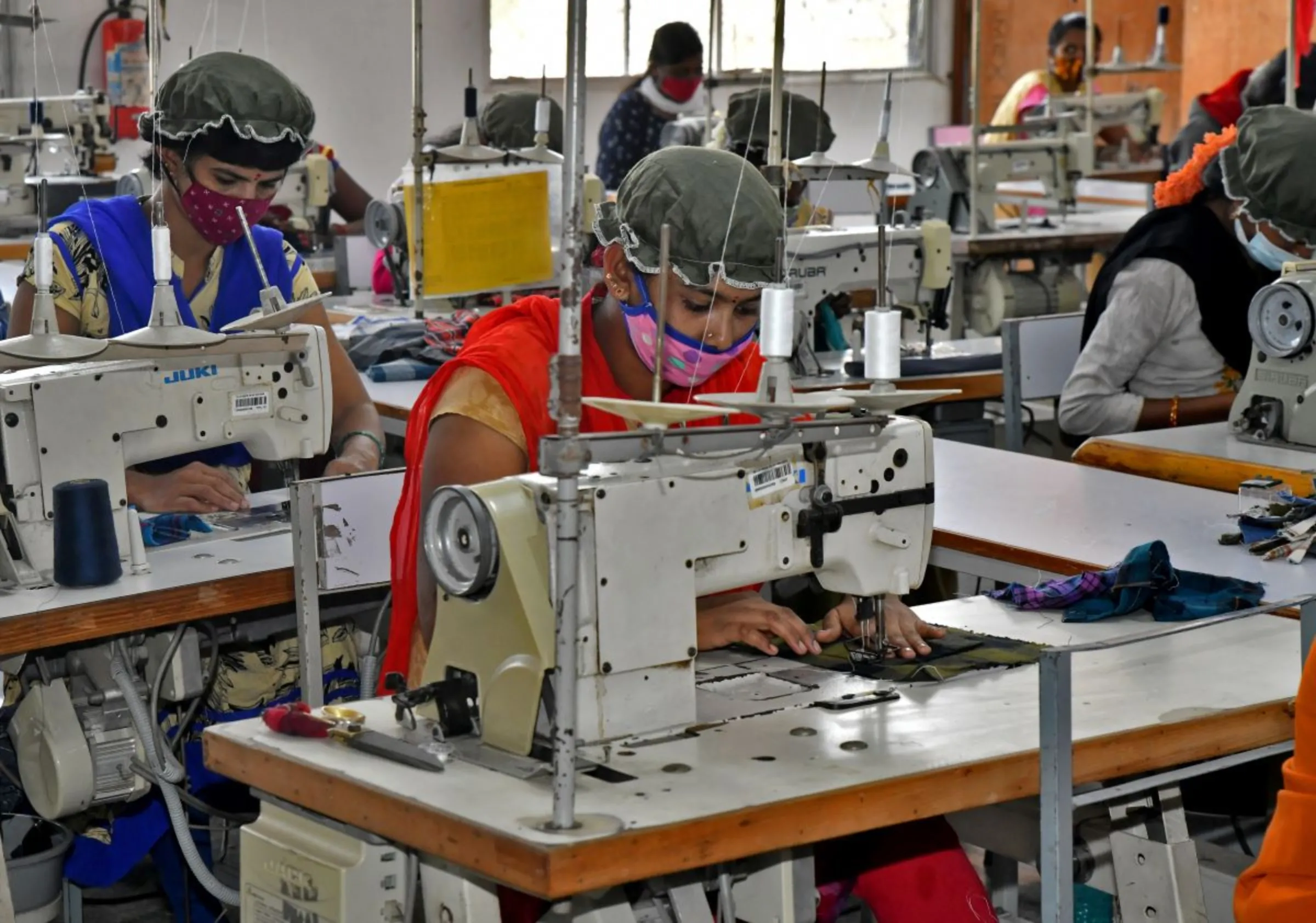Fashion brands drag feet on their green promises

Garment employees work in a sewing section of the Fakhruddin Textile Mills Limited in Gazipur, Bangladesh, February 7, 2021. REUTERS/Mohammad Ponir Hossain
What’s the context?
Despite net-zero pledges, few clothing brands are taking steps to decarbonise their supply chains to make fashion more sustainable.
DHAKA - The fashion industry is responsible for up to 8% of the world's planet-heating greenhouse gas emissions, according to U.N. figures, which many of its companies have promised to tackle with targets to reach net zero by 2050 or sooner.
Yet researchers, companies and industry insiders say that little has been done to push this along in their supply chains in major textile-producing countries like Bangladesh, India and Cambodia.
"Brands are moving far too slow," said Todd Paglia, executive director of Stand.earth, an environmental non-profit advocacy group based in North America.
In 2025, about a third of the 42 brands surveyed in a recent Stand.earth report cut their emissions by 10%, compared to their baseline years - while 40% of brands saw their emissions grow.
It found that only a fraction of leading brands are providing funding to cut emissions in their supply chains, which puts pressure on factories and suppliers that lack the financial clout to shift towards cleaner processes.
About half of the major global fashion brands have set science-based targets for emission reduction, according to a 2024 report by Fashion Revolution, a non-profit group campaigning for sustainable fashion.
Meanwhile, a large number of brands still lack visible efforts to finance their climate plans and support suppliers to decarbonise.
"What we are seeing is a dangerous disconnect," said Mohiuddin Rubel, a former director of Bangladesh's garment manufacturers' association who is now director at textile maker Denim Expert Ltd.
"Brands are turning their ambitious targets into unfunded mandates placed upon suppliers, who are asked to bear the full financial burden of decarbonising the brands' value chain," he told Context.
Financing gap
Apparel manufacturers can cut factory-level emissions by switching to energy efficient equipment, installing renewable energy and using low-emissions transportation.
In Bangladesh, a garment manufacturing hub, 83% of the industry's emissions are due to the on-site burning of fossil fuels, like natural gas, to generate power or run boilers to produce heat and steam, a report by consulting firm FSG said.
Many suppliers balk at the high capital investment needed to replace gas-based boilers with more energy-efficient technologies, like heat pumps, according to a study by the Apparel Impact Institute (AII), a non-profit promoting sustainable investments.
Overall, Bangladeshi fashion suppliers face an investment gap of $4.8 billion for cutting emissions by half by 2030, AII has said.
Clothing makers in India and Vietnam also face challenges in reducing their reliance on fossil fuels in heat and steam generation, which are used to wash, dye and finish fabric production.
About half of the brands surveyed by Stand.earth offered some form of support, but much of it involved assessments and audits to measure the carbon footprint or small-scale pilot projects, said Bangladeshi supplier Rubel.
"This is a drop in the ocean and does not address the systemic, industry-wide transformation required," he said.
Suppliers also need long-term purchase agreements and price premiums from brands that would work as incentives to invest in cleaner production, said Abhishek Bansal, head of sustainability at the Indian textile supplier Arvind Limited.
Brand action
Only six brands reported that they offered project financing for suppliers' decarbonisation efforts, the Stand.earth report said. Among them is the Swedish retail giant H&M, which has supported 23 smaller suppliers to invest in low-carbon tech.
"Brands need to accept that there will be a cost to climate transition, since expecting no cost for this rapid process is a little bit strange," said Kim Hellström, senior sustainability manager at H&M.
The retailer is planning to test energy-efficient thermal technologies in places like China, India and Vietnam.
"The low-carbon technology is here, and you don't need to talk about innovation - but you need to try them first for this industry," said Hellström.
If brands put budgets behind their goals, it would establish better partnerships with suppliers, said Kristina Elinder Liljas, senior director of sustainable finance and engagement at AII.
"Everybody has skin in the game: For brands, it's about future-proofing their businesses, and for suppliers, to make sure they remain relevant to the brand they are catering to," she said.
(Editing by Jack Graham and Ayla Jean Yackley.)
Context is powered by the Thomson Reuters Foundation Newsroom.
Our Standards: Thomson Reuters Trust Principles
Tags
- Net-zero
- Circular economies
- Corporate responsibility
















